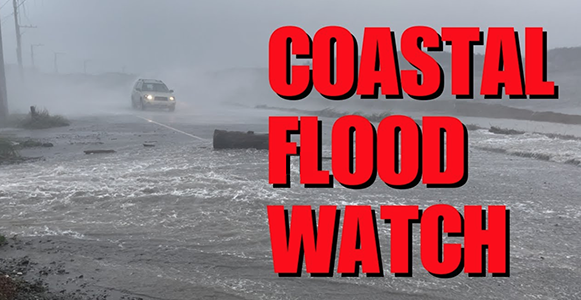||| FROM JANET ALDERTON |||
As a scientist, when I hear the word “data,” my mind lights up. Scientists love data! So when I had the opportunity to see our San Juan County Department of Community Development’s most current data spreadsheet for short-term vacation rentals two days ago, I dove right in.
I have been following the Orcas Island community’s response to what is essentially a market and technology-driven phenomenon ever since people I know and care about the raised concerns. The Vacation Rental Working Group formed in the summer of 2019 to study the issues and look for potential solutions. In response to the Vacation Rental Working Group’s call to adopt a pause in the issuance of permits, a group called Hosting on the Rock organized. Their mission statement is:
As hosts we want to serve our guests while preserving peaceful neighborhoods, our livelihoods and the beauty of the islands.
Sounds good, right?
Ok, hosting is when you are there interacting with your guests. I am totally in favor of this. So let me say, right off the bat, that I am not at all interested in regulating property owners who actually “host” their “visitors..” If the owners are on the premises or, even on the same parcel in a separate structure, during the time of the rental, this allows all the good things that Hosting on the Rock promotes: visitors being gently introduced to our “unique island ways” while being nudged to be courteous to the neighbors and “follow the rules.”
But let us consider the completely separate category of short-term vacation rentals where the “host” is not actually present. These are the enterprises that need regulating. When they cluster in neighborhoods, negative impacts occur.
These impacts range from loss of neighborhood character and cohesion (getting to know your neighbors is what builds “community”) to impacts on shared resources such as water, parking, and tranquility.
Thinking about tranquility, I have heard throughout my years on Orcas Island that, “San Juan County” is “different”– as if the usual laws of physics and market forces do not apply here. Water does run downhill- even in San Juan County. But I digress. It is the “market forces” that need tempering in this case.
San Juan County used to be truly “different.” It was a sleepy place with a total population under around 3,000 until sometime in the 1960’s when things changed -bigtime. The latest estimate is that there are 17,788 people who are “residents.”
No longer “sleepy,” in my opinion.
And this estimate is likely to be low. The pandemic has led many property owners who were once part-time to seek full-time refuge here. With the availability of high-speed internet, many have realized they can work from here. Remote working has become mandatory in many cases during the pandemic and employers have realized that they can be more flexible in negotiating when in-office work is required.
Back to the “data!”
The most recent San Juan County data for short-term vacation rental permits shows the following active and compliant permit numbers for each island (some of these “compliant permits” might be in the process of updating their required documentation -so these numbers could be a bit on the high side):
- Orcas Island: 299
- Lopez Island: 68
- San Juan Island: 182
There is a troubling disconnect between these actual San Juan County spreadsheet numbers and the “caps” proposed by our Community Development and Planning Department Director Erika Shook at the July 16, 2021 Planning Commission meeting:
- Orcas Island: 500
- Lopes: 174
- San Juan Island: 520
The Orcas “cap” far exceeds the number of permits that are active and compliant -according to the latest county data.
If many voters who live on Orcas are already hurting because of short-term vacation rental impacts, why would it be ok to increase the legal number from 299 to 500? This would make the distress much, much worse. There are residents of San Juan and Lopez Islands who are also concerned about current negative impacts of short-term vacation rentals.
If Lopez Island active and compliant permits are at 68, why set a “cap” at 174?
If San Juan Island active and compliant permits are at 182, why set a “cap” at 520?
It also occurred to me to look at the data in relation to the population of each island that allows short-term vacation rentals. Shaw and Waldron Islands ban short-term vacation rentals. The Town of Friday Harbor does not allow short-term vacation rentals for any residence that is hooked up to “town” water. This is probably most of the residences -but someone could ask for this data.
The latest population estimates show that the Lopez Island population is about 47% of the Orcas Island population. Yet the active and compliant short-term vacation permits on Lopez impact about half the proportion of its residents compared to Orcas Island:
- Orcas Island has about one VR permit for every 20 residents.
- Lopez Island has about one VR permit for every 41 residents, and (!!!!)
- San Juan Island has about one VR permit for every 49 residents.
The Orcas Island neighborhood communities are obviously living with much greater impacts from short-term vacation rentals than are communities on Lopez and San Juan Island. Of course, this is the “high elevation” take home message. There are certainly neighborhood communities on both Lopez and San Juan Islands where short-term vacation rentals are concentrated. And they are suffering, too. The issue of “concentration” must be addressed after “caps” are adopted.
My plea to our Planning Commissioners and to our County Councilors:
Please consider the short-term vacation rental data that explains why many people on Orcas Island say that are suffering. Please do not adopt “caps” that are well above the level that has caused, and continues to cause, such suffering that a large group of your constituents organized to work on a rethink of the “business as usual” that is being propelled by market forces.
I know that our Orcas representative, Cindy Wolfe, has been listening to her constituents. I am grateful to Counselor Wolfe. But Counselors Minnie and Stephens appear to have been listening to the Hosting on the Rock’s soothing words about short-term vacation rentals.
The people of Orcas Island do actively participate in the election of all three County Councilors. If short-term vacation rental “caps” are set unreasonably high, many voters will not forget which of our representatives listened and which instead were soothed by the Hosting on the Rock mission statement:
As hosts we want to serve our guests while preserving peaceful neighborhoods, our livelihoods and the beauty of the islands.
Let hosts serve their guests, but please separate the regulation of unhosted market-driven short-term vacation rentals from this lovely ideal.
**If you are reading theOrcasonian for free, thank your fellow islanders. If you would like to support theOrcasonian CLICK HERE to set your modestly-priced, voluntary subscription. Otherwise, no worries; we’re happy to share with you.**









Janet,
Thank you for taking the time to research the facts presented in your brilliant letter. As a full time resident in Sea Acres living next door to a full time vacation rental my rural setting and lifestyle has significantly changed. It’s unsettling not knowing who’s living week-to-week in the house close to ours. Oftentimes, there are 6-8 people staying in less than 1,500 sq. feet. The feeling of the neighborhood is transient and people on vacation often think their right to have a good time isn’t in sync with the peacefulness that was here just a few years ago.
Stephanie Rosenblatt
Excellent letter, Janet! You get right to the point. No one wants to take away the right and ability of local residents to earn a little income from renting out a room or a structure on their property. These are the people who “host” visitors in our island communities. However, we need caps based on real numbers, on currently active, compliant vacation rentals, in order to lower the pain being suffered by residents. As Janet says, it is the non-hosted vacation rentals that need regulating.
Thank you Janet for your insightful editorial.
You are spot-on about the need to clearly define “HOSTED” vs. “UNHOSTED” vacation rentals. I think “hosted” VRs should be defined as
1.) Owner present during Hosted stay. Suggest owner to be defined as SJ County resident.
2) Rental of a room/area in owner’s home or another structure on the owner’s parcel: guest house/tent/yurt/barn…
To do this, we need to understand how may existing permitted VRs are Hosted and and how many Unhosted for each island.
As a next step, I will voice my support for delineation of HOSTED and UNHOSTED VRs to the SJ County Council.
Thank you!
For VR permits, I believe preference should be given under the cap system for “hosted” VRs.
I couldn’t agree more, Janet. Thanks for writing such a well-thought-out letter.
Thank you Janet for defining the idea of a “hosted’ vacation rental. You are absolutely right. When 54% of vacation rentals are owned by people/entities who do not live in the San Juan County, they clearly are NOT hosted!
Let us not forget the VR category whereby the owner uses the property off and on ( they may have purchased it but are not ready to be full timers…or it’s their full time home and they have short termers in while they are periodically away. The owners can’t be. on-site.
So the gist of this is to make it mandatory for VR owners to be present whenever the property is rented? That way they can be “parents” to the unruly guests they rented to and can demonstrate to these “outsiders” how real Orcasians behave (always kind, generous, pious, environmentally conscious, community focused, never loud, no drugs or alcohol consumption, curfew loving since bedtime should be about 8 PM, etc.). What a novel and progressive idea! Someone once allegedly said something to the effect of: “Let the person among you who is without sin cast the first stone….”
Perhaps you can also mount a large PR campaign to counter the Tourism Board and discourage people from coming to Orcas? Or since you fund the Tourism Board just DEFUND it as good first step to making Orcas seem unattractive as a destination…
Janet has categorized the problem admirably. Hosted vs non-hosted. The Code has a category for owner occupied businesses. It is called Home Occupation. Owner is on site, there are traffic and noise regulations, and must fit in with the neighborhood. Non-hosted vacation rentals are a business. Past Council members have defined vacation rentals as a residential use. They are no more a residential use than a hotel or inn or bed and breakfast. Even in these categories the owner or manager is on site to tend to the guests. A non-hosted vacation rental is a business pure and simple. Off Island owners, many times incorporated, are in it as a business and run it as so. Many of them have little regard for the neighborhood or water or septic usage. This Council must step up and regulate the business of vacation rentals differently from home occupied businesses ( Home Occupation) in order to protect our island environment and neighborhoods. A moratorium on non-hosted vacation rentals is needed immediately.
A good reminder, Margot. But if the owners are not “on site”, still think that the short-term rental should be regulated differently from those where the owner is “on site”.
It is the Hosting on the Rock group’s own mission statement that highlights the inconsistency in their messaging. Quite ironic.
“As hosts we want to serve our guests while preserving peaceful neighborhoods, our livelihoods and the beauty of the islands.”
Neil, The San Juan Islands Visitors Bureau has been responsive in the past and suspended advertising that encourages people to visit our islands. I don’t know where we are headed, but the Delta Variant is surging even in San Juan County. Hospitals are at capacity throughout our region, and elective surgeries have been largely suspended.
Submitted by the San Juan Islands Visitors Bureau in March, 2020:
The safety of our island communities is our highest priority. In light of growing concerns about COVID-19, the San Juan Islands Visitors Bureau, the destination marketing organization (DMO) for the San Juan Islands, is encouraging visitors to postpone their travel plans to the San Juans to limit the potential spread of the virus. We are also suspending advertising campaigns. Based on Washington State Gov. Jay Inslee’s recommendations, and those of San Juan County officials, we are urging visitors and locals alike to practice social distancing and postpone non-essential travel.
Well said, Janet Alderton. It does not make sense to attempt to militate the negative impacts of VRs by establishing “caps” which nearly double their number.
Neil Kaye: I truly hope that your suggestion to de-fund the “Tourism Promotion Board” is taken seriously and enacted.
There have been suggestions to have the tourism board dollars go to improvements to facilities that tourists and residents alike enjoy: improvements to county parks, walking paths, public restrooms…
There definitely are feelings shared by both residents and visitors alike that we have reached or exceeded our tourist capacity (see the survey by the National Parks). Personally, I favor the Goldilocks model: not too hot; not too cold.
Excellent letter, Janet! Non-owner occupied vacation rentals are a business – like the one across the road from owned by an LLC in Wenache.
As one author pointed out Air BnB is actually the the largest hotel chain in the world.
Great letter Janet. Thank you. I too stand with those who are seeing thru the murk, and understand that the current push by the majority county council members for a cap which will essentially double the current number of operating vacation rentals in the county is not one that is attributing itself towards lessening the pain of “too many”, but is instead doing just the opposite… it is continuing business as normal, and is contributing to (is enabling) the problems relative to overtourism.
Within your letter, you stated, “It is the Hosting on the Rock group’s own mission statement that highlights the inconsistency in their messaging. Quite ironic.”
I agree. It seemed inevitable that eventually a pro-industry group would start up that was determined to offset the progress that the Vacation Rental Working Group has made over the past several years. And though both groups are fully focused on the vacation rental issue any similarities they may have end there. The Vacation Rental Working Group has been upfront and honest in their dealings with the people, with their steering committee members representing a broad swath of our island culture– ranging from people who are scientists, mathematicians, an architect, a water engineer, a carpenter, a farmer, a lobbyist for environmental groups, to people who live in affordable housing (OPAL), to the person that runs the Orcas local affordable housing group (OPAL), to owners of VR permits, and owners of properties that are rented out full time, to one Big Brother, and several people that work in various volunteer positions on the island (the Sr. Center, the O.I.C.F., and Community Connections).
To date, the board members of the Lopez-based vacation rental group Hosting on the Rock have spent much of their time & energy misrepresenting the vacation rental issue, including– mis-framing and side-tracking some of the aspects related to the VR issue, surreptitiously adding the names of a county’ advisory committee member to their anti-moratorium letter to the council, (denying the whole time that they did so), and claiming that there’s no housing problem in the San Juans… all the while their other board member owns and operates a VR permit that has been out of compliance for years.
Your constituents Jamie?
Someone once said, “”Once someone has been determined to be an untrustworthy liar, their pretend stances on important issues are simply not relevant to rational discussion.”
As a Lopez resident, I would like to comment with data about Lopez demographic and housing trends that appear to necessitate an end to tourism expansion via new VR permits on Lopez. As these trends are not as disconcerting on Orcas and San Juan, each island would benefit from a tailored approach. One-size-fits-all policies of VR caps based on future expected housing units are *thoroughly* misguided.
The Lopez working age population (18-64 traditionally) is critical for a functioning community with diverse businesses/organizations, and a solid EMS and fire department relying on volunteers (in addition to all the other countless fabulous volunteers).
This working age population is what makes tourism here possible. It also provides services for vacation homes. Lopez has the highest % of seasonal housing units: 51% of total housing units (O: 44%, SJ: 34%). Seasonal housing includes VRs.
Since 2010, the working age population as a percentage of total population decreased from 60% to 50% (the lowest % of all three islands). The total population has increased by 27%, not including the pandemic year 2020. The trend being that a smaller working population demographic supports a much larger total population.
Anecdotally, Lopez experiences a labor shortage and a strain on services to keep up with population growth. Businesses/organizations wishing to expand and hire are limited by lack of rental housing. Ferry service is equally impacted. Without the ability to make reservations, Lopez residents wait 2-3 hours to leave the island.
The working age population has decreased because real estate prices have doubled in the last ~6 years, because Lopez has the lowest percentage of rental housing of all three islands (21% – O: 24%, SJ:28%), and because Lopez has the lowest rental vacancy rate (0% – O: 2.5%, SJ: 5.5%).
If these trends continue for the next 10 years, Lopez would need to add 282 people to their working age demographic to maintain the current 51% working age population. At a typical 2 person occupancy rate, this equates to 141 affordable housing units.
In my humble opinion, Lopez is strained to keep things running for ourselves and the tourism levels as they are. As the working age population will continue to decline without a massive intervention, strains *will* increase.
Increasing tourism with additional VR permits would exacerbate these strains more rapidly. This is why I believe that tourism expansion has come to an end. The phrase “carrying capacity” was censored from the tourism sustainability town meeting 5 years ago. And here we are – maxed out.
The notion that rental of guesthouses, etc., is a “residential” use comes from a Washington State Supreme Court decision, not the county. But it raises an interesting question— the VRs that are totally short-term rented may not fit into that court decision.
The numbers of active and compliant VRs on the three islands — 299 on Orcas, 68 on Lopez, and 182 — explain at a glance why Orcas Islanders are the most upset by this issue. Perhaps we are already at our limit and the Orcas cap should be se at 300, not 500. I can see no justification for allowing 520 on the substantially more populous San Juan Island and 500 on Orcas Island. Enlighten me.
Margaret–
Can you elaborate (clarify, give possible examples thereof) regarding your statement “…the VRs that are totally short-term rented may not fit into that court decision.”
Michael Riordan,
I heard that the Planning Commission recommended the following island VR caps at their meeting on Friday, August 20, 2021:
active and compliant, by island: (*)
Orcas: 204
Lopez: 55
SJI: 133
total: 392
No separation into owner-on-premises vs not was discussed, as far as I know.
The lower numbers come from a new Short-term Vacation Rental spreadsheet provided by the San Juan County Department of Community Planning. Active vs inactive compliant permits were not easily spotted (by me) on the earlier data spreadsheet from the Department of Community Planning.
Janet – Thanks for this info, I missed the first part of the Friday meeting. Are the numbers you reference in addition to the currently permitted VRs?
At the point where I joined they were discussing an additional reporting requirement for number of days per year rented, number of occupants, total revenue and water usage, but only if water usage info was readily available to the VR owner. And a concession that this data wouldn’t be available for at least a year.
Sylvia, I was not able to join the Planning Commission meeting on August 20 because of personal scheduling conflicts. But Steve Bernheim sat through the entire 8 hours. And, of course, the Planning commissioners put in hours and hours in preparation for the meetings and the meetings themselves. The Dept. of Community Development staff also has dedicated endless hours. I am thankful for everyone’s dedication. I plan to listen to the recording of the meeting because the issues are so important and so complex:
https://media.avcaptureall.com/session.html?sessionid=882238bb-bc69-4089-8081-1484a36918f9&prefilter=30,5840
Sylvia, It is my understanding that the numbers I cited are not in addition to the currently permitted VRs.
Janet – thanks for the link, I was impressed by all the effort both the DCD and planning commissioners have devoted to this. If implemented, the additional reporting data proposed could provide clearer measures of the impact on shared resources.